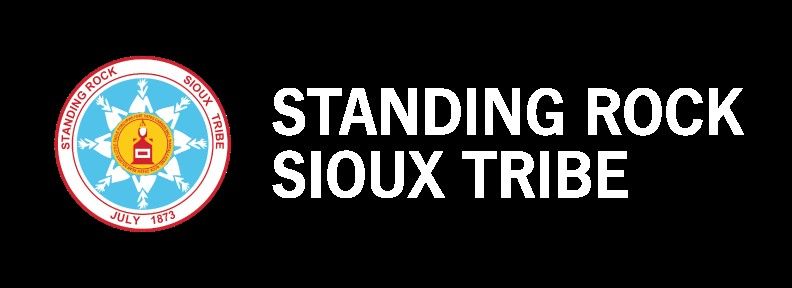
Army Corps Minimizing Indigenous Voices and Public Comment to Favor Big Oil and Steamroll Democratic Process
Key Points
1. During the first two days of November, the Army Corps held in-person public hearings, ostensibly to accept feedback on the draft Environmental Impact Statement (EIS) for the Dakota Access pipeline (DAPL).
2. The quietly announced sessions initially excluded key tribal participants. Would-be speakers were also asked to submit written comments or were siloed with a stenographer rather than being heard in a truly public forum.
3. In addition, an Army Corps representative admitted that the agency would not equally weigh comments in opposition to the pipeline submitted online, instead counting similar comments as a single submission.
4. More than 66,000 comments have now been submitted through forms set up by Standing Rock and its allies telling the Army Corps to respect the law and shut the pipeline down.
5. Standing Rock continues to ask the public to demand the Army Corps start from scratch on the EIS process and stop operations of DAPL. Comments can be submitted via Standing Rock’s website: https://standingrock.org/dapl-eis/
Bismarck, N.D — A diverse crowd of Tribal members, water protectors and allies looked crestfallen outside the Radisson Hotel upon learning they wouldn’t be allowed to speak out in a public forum about their opposition to the Dakota Access pipeline (DAPL). Some had come a long way, many spending what little they had to get there, to demand the pipeline be shut down over safety concerns. But now the U.S. Army Corps of Engineers, which had promised them a space to air their grievances, told them there would now be no such opportunity. Pipeline opponents then took matters into their own hands.
Someone in the crowd produced a bullhorn, others brought out various props, and for three hours, one by one, pipeline opponents expressed their concerns outside the building while Army Corps representatives looked on with what one observer categorized as, “disbelief.” They knew what they had to say wouldn’t be counted in the official record — but as they quickly found out, that now appears to be true even of some comments submitted through online channels. So they didn’t hold back.
Lakota activist Joe Lafferty mixed oil and water in a cup and proffered it to government officials. “If it means so much to you, I want you, DAPL, Army Corps of Engineers, drink this water with oil in it,” he said.
His attempt to turn the tables on the Corps gets to the heart of the concern of most who came to comment. For six years, the pipeline has operated without a valid Environmental Impact Statement (EIS) or easement to cross under the Missouri River, in violation of the national Environmental Policy Act. The Standing Rock Sioux Tribe says this crossing, just north of its reservation, presents a clear and present danger to its entire community — and millions of other people downstream.
Standing Rock’s chairwoman, Janet Alkire, has consistently called for the pipeline’s shutdown since she took office in 2021. During her testimony before the Corps at a meeting earlier that day, she said learning everything about the pipeline was her first priority on the job. “Am I going to be the Tribal Chair that has to deal with a disaster, a pipeline that breaks?” she asked. “The questions that Standing Rock keeps asking are in regards to the EIS and information we need to address those issues.”
Alkire’s concerns over lack of transparency from the Corps, tasked under court order with overseeing the process of the pipeline’s environmental review, has been echoed by other tribal officials. “In order for me to do my job, we need information, and this information has not been given to us. And it’s for a pipeline that can potentially threaten 18 million users downstream,” said Doug Crow Ghost, who serves as Standing Rock’s water resources director and chair of the Great Plains Tribal Water Alliance.
“We’re the first responders for a pipeline break,” Crow Ghost said, pointing to blacked-out text on page after page in a heavily-redacted emergency response plan provided to Standing Rock by the Corps. “If there’s a break, this is what they’re telling us is going to happen to the water.”
Tribal officials say both the redacted plans they’ve been provided and the hearings held in Bismarck indicate a pattern. The Corps, they say, has been anything but transparent in its handling of the entire environmental review process. The agency’s quiet notice of public hearings failed to make headlines. And after attending the hearings, tribal officials say the Corps didn’t seem very interested in hearing what they — or anyone else — had to say.
On Wednesday morning’s first meeting with tribal officials, the Corps initially excluded some key tribal leaders, including Standing Rock’s Game and Fish director, Jeff Kelly. When tribal representatives began to question the exclusions, federal officials and police — including some who were also present to quell the original DAPL protests in 2016 and 2017 — showed up to monitor the crowd.
Standing Rock officials say they requested the public meetings be held at the reservation. “This is where the pollution will occur when the pipeline leaks, and our people will be the ones impacted,” said Alkire. “The meetings should not have been held 65 miles away, in a non-Indian community which will not be affected by a spill. That seemed designed to minimize tribal voices and facilitate pro-DAPL testimony.”
Since the Corps first released the draft EIS in August, Standing Rock has led an effort to use the public comment period — recently extended to December 13 — to reactivate its allies, shut down the pipeline, and demand that a new EIS be prepared by an impartial party. At least 66,000 comments have so far been submitted through Standing Rock’s website and those run by nonprofit allies.
But at the first meeting with tribal officials, U.S. Army Corps Chief of Operations Sheila Newman admitted the Corps won’t treat public comments submitted through these channels as equally valid. “We've gotten thousands of form letters that say the exact same thing. And so for the analysis, when we're looking at how to improve what is in the document, that counts as one comment. Understand that,” she said. “The judge said no, and finally he said yes, it should be counted that way … We do record the number, but to look at the analysis, we take that comment … we treat it as one.”
Gathered outside and listening via speaker phone, activists expressed outrage. “That was shocking to me. There’s the onsite leader for the U.S. government saying the quiet part out loud and admitting the entire process is a sham,” said Chase Iron Eyes, director for the Lakota People’s Law Project. “They put on a dog and pony show, but this just proves they don’t really want us to have a voice. They do what they want to do regardless of well-considered input from both U.S. and tribal citizens.”
Crow Ghost put it another way. “The two days went as expected — not well,” he said. “The government is doing what it’s always done. Keeping the Indians on one side of the fence and keeping us muzzled. It’s undemocratic. They keep us in the dark and allow no substantive discussion about the EIS. What a Big Oil-affiliated firm produced in these 1,400 pages is worthless. All the things we have said in our reports and meetings with the Corps would be incorporated in a fair and honest government to government consultation.”
For additional information and to take action, visit https://standingrock.org/dapl-eis/
Additional background on DAPL:
- In 2016 and 2017, tens of thousands of people joined resistance camps near the Standing Rock Sioux Tribe’s reservation to protest the Dakota Access pipeline (DAPL). Standing Rock never gave its free, prior and informed consent to DAPL — as required by the United Nations Declaration of the Rights of Indigenous Issues — but the pipeline was built through the Tribe’s unceded treaty lands and under the Missouri River, just upstream of the reservation.
- Today, DAPL presents a clear and enduring threat to Standing Rock’s primary source of freshwater and delicate ecosystems.
- After Standing Rock brought a lawsuit against DAPL, a federal court revoked DAPL’s easement to cross federal lands, pending the release of a new Environmental Impact Statement (EIS). A much-delayed and problematic draft EIS has now been released for public comment by the U.S. Army Corps of Engineers as DAPL continues to operate illegally, without a valid federal easement.
- The draft EIS, largely prepared by a member of the American Petroleum Institute, ignores major concerns voiced by Standing Rock and other Great Plains tribes. It fails to account for pipeline operator Energy Transfer’s abysmal safety record and DAPL’s lack of an adequate emergency response plan.




